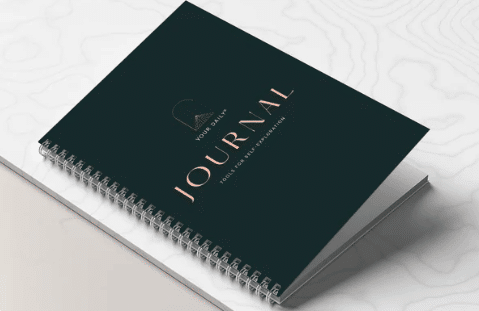Whenever I mention Rage Journaling to a friend or client I get big eyes and a blanched face: ” What is that?! Are you ALLOWED to do that?” The mere mention of rage and journaling in the same context is definitely foreign.
We all know about gratitude journaling and how you’re meant to put your best and prettiest thoughts down on paper, but what about all the ugly and anxious ones? Where do those go?
Enter Rage Journaling.
Unveiling the power of anger, rage journaling can be a powerful tool to transform your mental health. From reducing stress and anxiety to improving sleep, there are countless physical and mental benefits to harnessing the energy of your anger through journaling.
With this practice comes an opportunity to explore the depths of what lies beneath the surface – giving you invaluable insight into your own psyche.
In this article, we dive into what rage journaling is, investigate the vast health benefits and provide tips on how you can begin your own practice.
What is Rage Journaling, Exactly?
Let’s start with what rage journaling is: it’s journaling through feelings of rage, anger, and frustration. Simply put, rage journaling is the practice of writing down your thoughts and feelings when you’re angry so that you can move through the negative feelings of anger. This allows you to move on with your day without holding onto, or feeling stuck in, these negative thoughts.
Many of us have been raised to believe that anger and rage are a sign of weakness and should be dampened and shoved down, ignored and to turn the other cheek.
I’m here to tell you that anger is normal and healthy. It’s a sign of activation and wrongdoing. It’s what you do with that anger is what needs to be monitored and addressed.
Benefits of Rage Journaling
Believe it or not, rage journaling is a powerful tool to help maintain your physical and mental well-being. It has been proven as an effective means to unlock our emotions and move through events. This might be even more true for negative emotions because, as a society, those are the emotions we suppress the most.
You also have the power to heal many physical ailments through expressing pent-up anger. Research states that a plethora of physical conditions – including stomach issues, IBS, and back pain – exist because we don’t know how to process and release our anger. We hold it in and it eats away at us.
Writing about your anger in a safe place is one of the most effective ways to understand, express, learn from, and take positive action by guiding your anger.

How to Rage Journal
Decide on a method of journaling.
We recommend a physical notebook and a pen, specifically our Journal For People Who Don’t Know How To Journal. We designed it intentionally with a spiral binding so you can easily rip out pages you don’t want hanging around. However, you might prefer to type on a computer. Whatever your method, decide on it before you begin raging.
Write down your thoughts and feelings.
Be as explicit as you can. This is something that is private and just for you. You will not share this with, nor will you offend, anyone. Say what you want to say, feel what you want to feel, express what you want to express. In any way shape or form, get those feelings and thoughts out of you and onto the page. Remember, you can always rip them out.
Make it as easy or complex as you like.
A bulleted list is just as powerful as full sentences. It can be a picture, a diagram, a series of words…whatever moves you to get your feelings down on paper.
Keep it brief.
Whenever something upsetting happens – you lost your car keys, you were late to work, you got yelled at by your boss, etc. – write down your feelings. Aim for 4-5 minutes. The goal is to get into the habit of journaling when things feel tough, so keeping it short and sweet will help it stay manageable.
Keep it consistent.
Rage journaling is a tool that works best when used consistently. It allows us to uncover trends and triggers, and helps to arm us with knowledge so that we can be more balanced and patient when we show up in the world (more on this below).
Keep or Destroy?
This is up to you. Some choose to keep their writings to see how far they have come. If you choose to destroy, consider doing it in a cathartic method like shredding or burning (be safe!). Some choose a ritualistic destruction once their notebook is full, while others choose to destroy each page as they write them. Feel into what is right for you.
Results of Rage Journaling
After you have been recording your anger in a journal for a couple of weeks, you should start to see recurring themes, or “triggers”. This can help identify what caused you to become angry in the first place.
Triggers often fall into one of several categories:
- Other people doing or not doing what you expect them to do
- Situational events that get in your way, such as traffic jams, computer problems, ringing telephones, etc.
- People taking advantage of you
- Being angry and disappointed in yourself
- A combination of any of the above
Tracking these patterns will allow you to see the common themes in your experiences. Here are some examples of trigger thoughts to get you started:
- People demand/expect too much of you.
- People are rude or inconsiderate.
- People take advantage or use you.
- People criticize, shame, or disrespect you.
- People are thoughtless and irresponsible.
- People do not help you.
- People try to control or manipulate you.
And here is a list of situations where these themes are likely to occur:
- When stating a difference of opinion
- While receiving and expressing negative feelings
- While dealing with someone who refuses to cooperate
- When saying “No”
- While responding to undeserved criticism
- When asking for cooperation
- While proposing an idea
Keep note of what themes, or patterns, you are seeing in your life. Armed with this knowledge, you can now work through your thoughts of anger constructively. Let this be extremely empowering. It should help better prepare you to navigate the rough waters when anger bubbles to the surface again.

Get Started
Here are some bonus journal prompts to get you started on your first entry. Save for when you’re feeling angry, and let us know how it helps you!
Write about any and all of the below.
- Rage Rating: On a scale of 0–10 how angry do you feel?
- What happened that gave you pain or made you feel stressed?
- What was specifically provocative about the situation?
- What thoughts are going through your mind?
- What was the effect of your behavior on you, on others?
- Were you already nervous, tense, and pressured about something else? If so, what?
- How did your body respond? Did you notice your heart racing, your palms sweating?
- Does your head hurt?
- Did you want to flee from the pressure or perhaps throw something?
- Did you feel like screaming or did you notice that you were slamming doors or becoming sarcastic?
- What did you actually do?
- How did you feel immediately after the episode?
- What were the consequences of the incident?
- Reflection journaling: Did you feel differently later in the day or the next day?
NEXT:
Spend some time contemplating your thoughts and feelings.
- How did you end up here?
- Where can you go next?
- What tools do you need to move on?
- What steps do you need to take to grow?
Rage journaling can be a powerful catalyst for self-discovery and emotional healing. It allows us to explore our innermost thoughts, reach a place of self-acceptance and clarity, and take steps toward progress. With the right mindset and preparation, anyone can learn to rage journal effectively.
Get started on the journey of personal growth by embracing anger, insecurity, and fears during the practice – look at them as little signs pointing you in the direction of self-improvement.
If you’re all set to try out rage journaling—great! We highly recommend you buy our Journal For People Who Don’t Know How To Journal as it is tailored for such needs. If you try this practice and these prompts, we’d love to know how it went!





